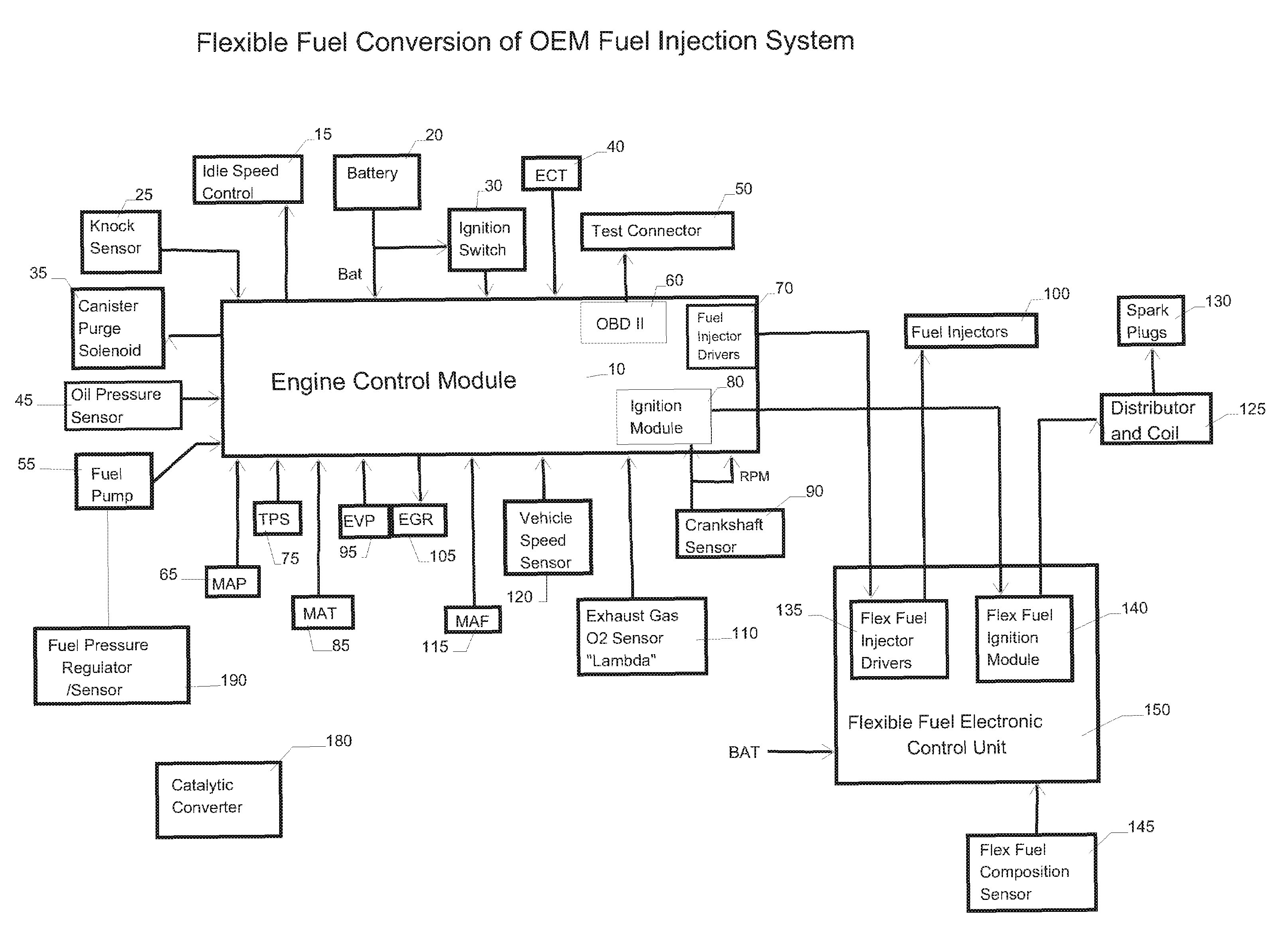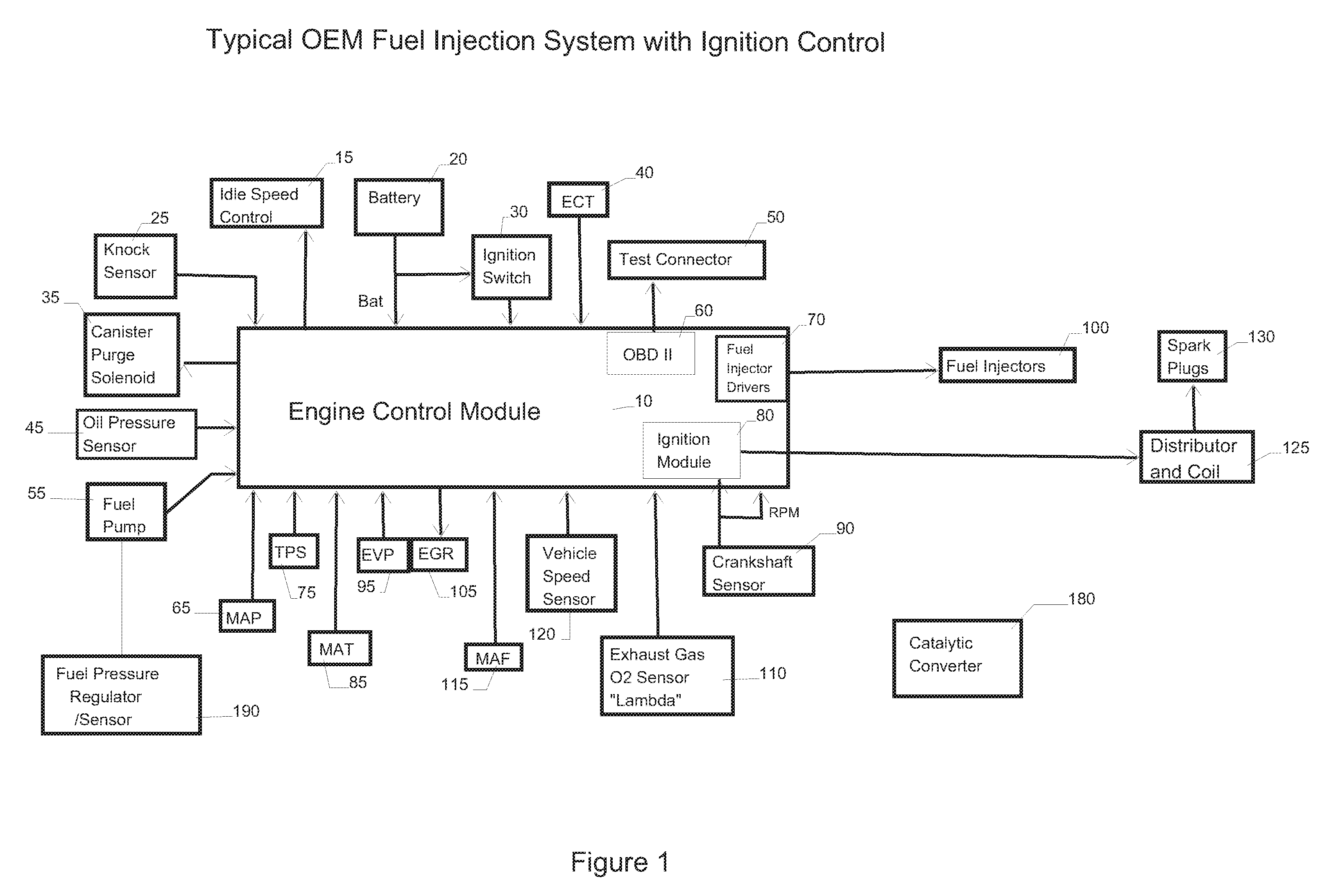Addition of flexible fuel engine control system
a technology of flexible fuel and control system, which is applied in the direction of electric control, machines/engines, mechanical equipment, etc., can solve the problems of air pollution generated by exhaust emissions from conventional gasoline or diesel powered internal combustion engines, high emissions, and high fuel consumption of classic cars and modern sports cars with high compression engines. , to achieve the effect of reducing air pollution and greenhouse, reducing fuel consumption, and reducing the cost of fueling the vehicl
- Summary
- Abstract
- Description
- Claims
- Application Information
AI Technical Summary
Benefits of technology
Problems solved by technology
Method used
Image
Examples
Embodiment Construction
[0018]Referring to FIG. 1, the major components of a modern Electronic Fuel Injection (EFI) system are shown. These are common components for gasoline engines in operation today. Outside of a brief description, a detailed functional description of the system will not be taught here but rather the system is presented to form a basis for the first embodiment of the present invention shown in FIG. 2.
[0019]The heart of an EFI system is the Engine Control Module (ECM) 10. The ECM 10 typically contains a microcontroller that receives information from a variety of sensors such to control the operation of the engine. The ECM 10 controls the operation of the engine by controlling the timing of the firing of the Spark Plug(s) 130 and by metering the consumption of fuel via the Fuel Injector(s) 100. The ECM also controls other aspects primarily related to the engine's exhaust emissions. Other important parts of the system are the Fuel Pump 55 that moves fuel from the gas tank (not shown) to th...
PUM
 Login to View More
Login to View More Abstract
Description
Claims
Application Information
 Login to View More
Login to View More - R&D
- Intellectual Property
- Life Sciences
- Materials
- Tech Scout
- Unparalleled Data Quality
- Higher Quality Content
- 60% Fewer Hallucinations
Browse by: Latest US Patents, China's latest patents, Technical Efficacy Thesaurus, Application Domain, Technology Topic, Popular Technical Reports.
© 2025 PatSnap. All rights reserved.Legal|Privacy policy|Modern Slavery Act Transparency Statement|Sitemap|About US| Contact US: help@patsnap.com



